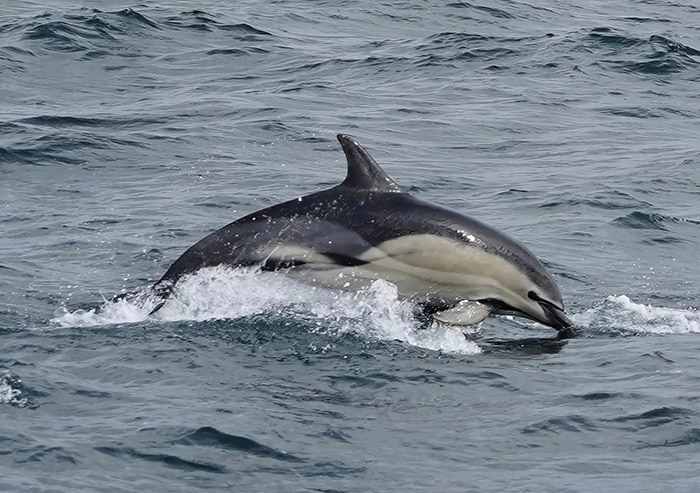Rare hybrid dolphins sighted off Cornish coast
by Seawatch Foundation

Two rare hybrid of a Common Dolphin and a Striped Dolphin were recently sighted off the coast of Falmouth, Cornwall. The sighting was made by crew and tourists on a boat operated by AK Wildlife Cruises. The dolphins were seen swimming with a pod of Common Dolphins and were reported to be breaching more vertically and more frequently than their Common Dolphin counterparts.
The hybrids have a combination of features from both species. They have very distinct black and white stripes running across their flanks that are a distinct feature of the Striped Dolphin, but they have the distinct hour glass pattern and colouring of a Common Dolphin.
Hybridizations between cetacean species is common, with around 20% of all cetacean species hybridizing. We commonly see hybridization between bottlenose dolphins and Risso’s dolphins as well as between bottlenose dolphins and pilot whales.
Hybridization between Common Dolphins and Striped Dolphins is relatively uncommon in the UK, but it has been documented in the past. This is the first time that common/ Striped Dolphin hybrids have been reported in this area.
The sighting is a reminder of the importance of protecting marine life. Dolphins are facing a number of threats, including habitat loss, pollution, and overfishing. By working together, we can help to ensure that these amazing creatures continue to thrive.
Sea Watch Foundation and AK Wildlife Cruises are committed to the conservation of dolphins and other marine life. We regularly conduct surveys of dolphin populations and work to raise awareness of the threats facing these animals.
We are excited to share this news of the rare hybrid dolphin sighting and hope that it will help to raise awareness of the importance of dolphin conservation.
21 Aug 2023
Share this story




